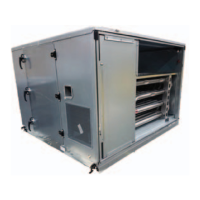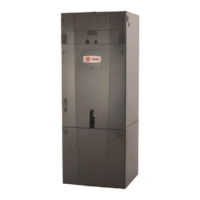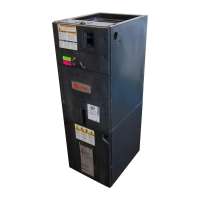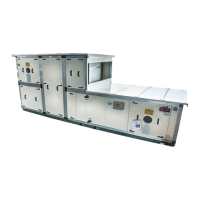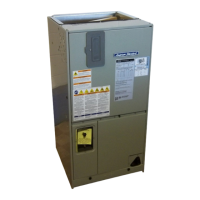Piping
CLCH-SVX08C-EN 17
Piping
Gas Piping
Note: Installation must conform with the American
National Standard Z223.1 (NFPA 54), the National
Fuel Gas Code, latest edition, in the absence of local
codes.
• Gas piping should always be done in accordance with
local codes.
• Tighten all joints securely.
• Pipe unions should be a “ground joint” type to prevent
leakage.
• Provide adequate support for field-installed piping to
avoid placing stress on the gas train and controls.
• Run takeoff lines from the side or top of the main gas
line to prevent moisture from being drawn into the gas
train of the unit.
• Provide a drip leg in the field-installed piping, installing
it near the unit.
• Refer to Figure 13, p. 17 and Figure 14, p. 18 for
acceptable piping penetration locations.
Figure 12. Leaving air side (tube or secondary) of gas
heat section
WARNING
Hazard of Explosion and Deadly Gases!
Never solder, braze or weld on refrigerant lines or any
unit components that are above atmospheric pressure
or where refrigerant may be present. Always remove
refrigerant by following the guidelines established by
the EPA Federal Clean Air Act or other state or local
codes as appropriate. After refrigerant removal, use dry
nitrogen to bring system back to atmospheric pressure
before opening system for repairs. Mixtures of
refrigerants and air under pressure may become
combustible in the presence of an ignition source
leading to an explosion. Excessive heat from soldering,
brazing or welding with refrigerant vapors present can
form highly toxic gases and extremely corrosive acids.
Failure to follow all proper safe refrigerant handling
practices could result in death or serious injury.
Figure 13. Gas heat internal piping penetration location
Combustion Air Inlet
Shaded area is "OK" for gas inlet pipe
Do not install gas pipe in access door or combustion air inlet
Access
Door
Access
Door
Flue
Internal Vestibule

